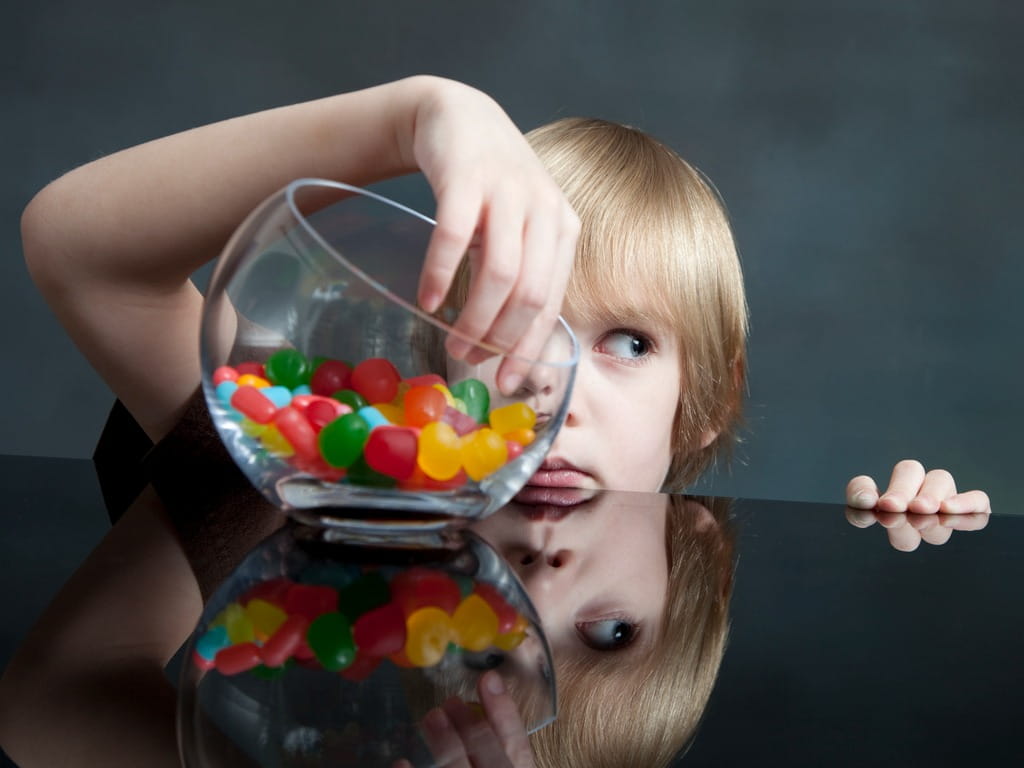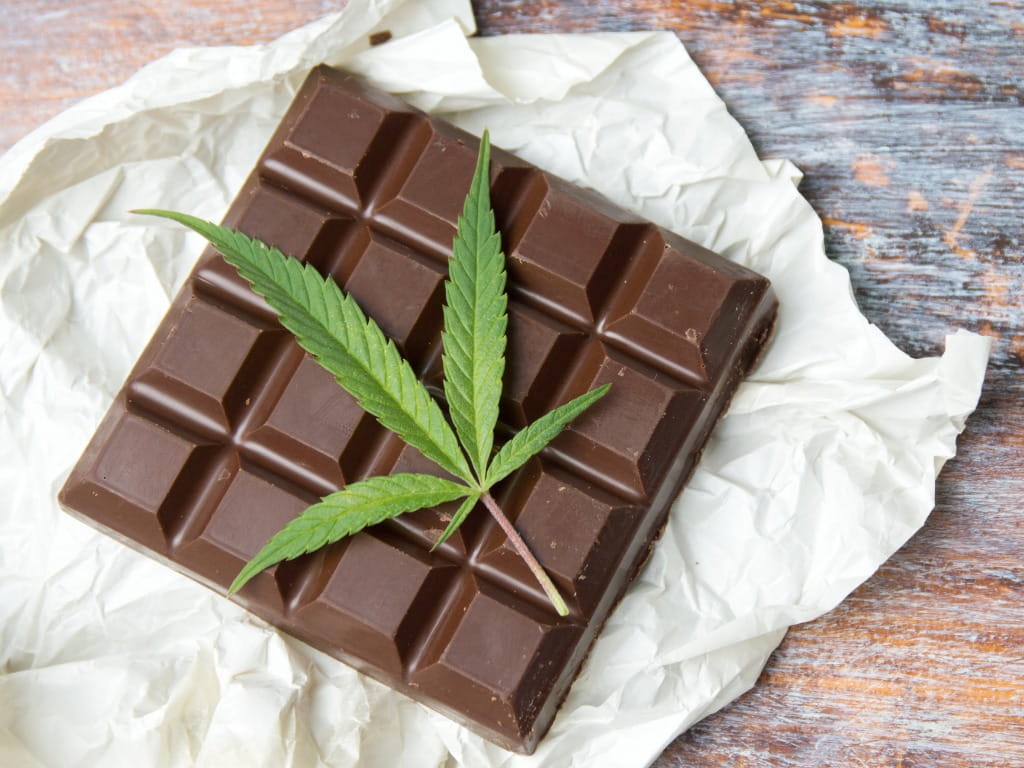My Child Ate a Cannabis Edible

The Bottom Line
Cannabis edibles are often sweet or savory products that are naturally attractive to young children. Serious and sometimes life-threatening side effects can occur in children who consume cannabis edibles.

Are edibles legal?
Although the possession, sale, and use of cannabis remain illegal on a federal level, most states have passed legislation to legalize or decriminalize (meaning it’s still illegal, but officials have decided not to prosecute for possessing small amounts for personal use) recreational and medical use of cannabis products. Cannabis products, including edibles, are available for sale in many states and can also be purchased over the internet.
How much THC is in edibles?
The amount of THC in edibles varies by product. Many cannabis-containing edible products contain potentially toxic amounts of the active ingredient THC. For example, a small, one-ounce bag of THC-infused Doritos-inspired nacho cheese chips contains 600 mg THC, a dose that is poisonous for both children and adults when an entire bag is consumed. Even when children eat smaller amounts of these products, the consumption of THC can result in unwanted and dangerous side effects.
Are edible ingestions on the rise in children?
While these products are meant to be used only by adults, unintentional exposures to cannabis edibles in children are becoming increasingly common in the U.S. When children eat cannabis edibles, serious and potentially life-threatening side effects can occur.
Why are kids more vulnerable to cannabis ingestion?
There are several reasons why children might eat cannabis edibles. Children are naturally attracted to tasty items such as candies and baked goods, and many edible cannabis products resemble these. Cannabis edibles can be in packaging that is remarkably similar to snack foods that are popular among children and adolescents, including Doritos, Nerds, and Cheetos. Cannabis edible packages are sometimes colorful and can feature appealing images of cartoon characters. While the packaging states that the product inside contains cannabis or THC, this information is often in small print and cannot be easily read or understood by young children.
Why aren’t edibles in child-resistant packaging?
Many people wonder why there are not stronger requirements to make cannabis edible packaging less appealing to children. Since cannabis is illegal on the federal level, there are no federal regulations relating to cannabis edible packaging. There is also no federal government enforcement of how cannabis edibles are packaged. Product labels can be inaccurate or confusing. Laws regarding the packaging and labeling of cannabis products vary from state to state but generally include a requirement for child-resistant packaging. In Illinois, cannabis product packaging must also be odor-proof, cannot include images of cartoons, toys, animals, or children, and must not contain information that is false or misleading. Alaska does not allow cannabis product packaging to contain markings, colors, or patterns that are similar to widely distributed branded food products. Unfortunately, cannabis sellers do not always follow these laws. In one 2017 study, investigators evaluated 20 cannabis-containing edible products purchased at dispensaries in California. None of the products met all the state’s requirements for cannabis packaging and labeling, and most were compliant with less than half of the published California regulations.
What happens if a child eats an edible containing THC?
Common clinical effects that occur in children after ingestion of cannabis-containing edibles include vomiting, dizziness, difficulty walking, a rapid heart rate, drowsiness, confusion, and breathing difficulties. In severe cases, hallucinations, an abnormally slow heart rate, and low blood pressure can occur. Recently published medical literature suggests that younger children (especially those less than 10 years of age) who are exposed to cannabis edibles are more likely to require hospital admission and respiratory support than older children. The signs and symptoms of cannabis poisoning in children can last for hours, and some children with severe symptoms might require admission to a hospital’s intensive care unit for careful monitoring.
In a study of poison center data, teenagers and children less than 5 years of age were the most common age groups affected by cannabis edible exposures. Because young children are likely to require medical attention after unintentional consumption of cannabis edibles, parents or caregivers should contact Poison Control immediately for expert advice if a child eats cannabis edibles. Parents and caregivers should call Poison Control regardless of whether symptoms are present because symptoms might not occur immediately after consumption. The symptoms of intoxication occur more slowly and less predictably than after cannabis inhalation.
What should I do if I think my child has ingested marijuana or THC?
For questions about adverse or unwanted effects that occur after use of cannabis-containing edibles, contact Poison Control for expert advice. Get an immediate personalized recommendation online or call 1-800-222-1222. Both options are free, confidential, and available 24 hours a day.
Kelly Johnson-Arbor, MD
Medical Toxicologist
Poison Control Media Information
Did you find this page helpful? If so, we need your support. Poison Control is in constant competition with misinformation online. Links to www.poison.org or our webPOISONCONTROL triage tool from other websites and blogs help internet searchers quickly find accurate information and Poison Control’s contact information in an emergency. If you use the content from this page, please provide attribution via a link back to this page, www.poison.org, or https://triage.webpoisoncontrol.org/#!/exclusions. By doing so, you could save a life. Thank you!
Click here for Poison Control media contact information.
Suggested page citation (APA):
Johnson-Arbor, K. (n.d.). My child ate a cannabis edible. Poison Control. https://www.poison.org/articles/my-child-ate-a-cannabis-edible
Poisoned?
Call 1-800-222-1222 or
Prevention Tips
- Keep all cannabis products away from children.
- Do not use cannabis products that look like common branded food items.
- Do not use cannabis products around children.
This Really Happened
A 2-year-old boy became unusually sleepy and lethargic after a playdate. His mother took him to a hospital, where he began to have seizures. Doctors placed a breathing tube, and the boy was transferred to a children’s hospital, where tests showed that he had THC in his system. His mother later realized that her son had ingested her cannabis gummies that contained 75 mg of THC. After a 36-hour hospitalization, the boy made a full recovery.For More Information
References
Cannabis product packaging and labeling. Illinois General Assembly. Accessed Apr 21, 2022.
Poisoned?
Call 1-800-222-1222 or
Prevention Tips
- Keep all cannabis products away from children.
- Do not use cannabis products that look like common branded food items.
- Do not use cannabis products around children.
